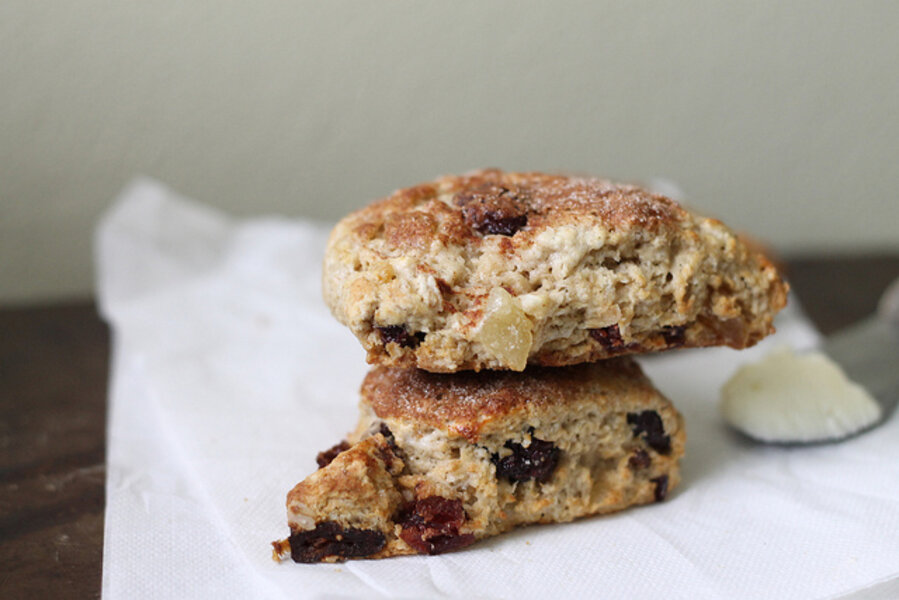By Sarah Murphy-Kangas, In Praise of Leftovers
So many things can be subbed out for the ginger and dried cranberry. Add raisins. Or no dried fruit. Or take the sugar out and add shredded cheddar and dried dill instead. I often serve them that way with soup. Or make your own chai spice mixture and use dried apricots and figs.
1-1/2 cup flour
1-1/2 cup oats
1/3 cup brown sugar
1 teaspoon baking powder
1/2 teaspoon baking soda
1 teaspoon salt
1/2 teaspoon dried ginger
1 teaspoon cinnamon
1 cube unsalted butter, cut into 8 pieces [Editor's note: 8 tablespoons or 1/2 cup]
1 cup buttermilk
1/2 cup dried cranberries
1/4 cup candied ginger, finely chopped
For topping
1/4 cup buttermilk
Cinnamon sugar mixture
1. Preheat oven to 400 degrees F.
2. In a food processor, combine first 8 dry ingredients and pulse a couple times to mix.
3. Add butter and pulse about 10 times until butter is in pea-sized lumps. Add buttermilk, cranberries, and ginger, and pulse just until dough holds together, about 5 or 6 times.
4. Turn dough onto a floured surface, knead a couple times, then divide the dough into two equal balls. Using your hands, flatten each round until it's about 1-inch thick and cut each round into 6 equal wedges for a total of 12 triangular scones. Transfer to a parchment lined baking sheet. Brush each scone with buttermilk and sprinkle a generous amount of cinnamon sugar over each. Bake for 12-15 minutes, watching carefully after 10 minutes so they don't get too crunchy on the outside. Let them cool for a few minutes before serving plain or with butter.
Read the full post on Stir It Up!








